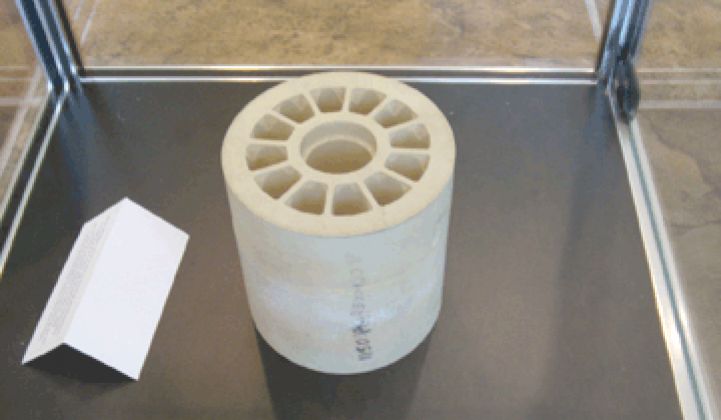San Leandro, Calif.--Think of the Pressure Exchanger from Energy Recovery as an industrial Super Soaker.
The company's energy-efficient desalination system revolves around applying pressure to "slugs" of water. Seawater has to be pressurized to a high level before a desalination membrane can filter out the salt and other impurities.
Seawater fills up a chamber inside of a rotating barrel, which sort of resembles the barrel on a pistol. When the slug in the rotating barrel encounters a high-pressure waste stream, energy from the waste stream is transferred to the slug. Think of a game of pool: an energized cue ball clacks another ball and in doing so, transfers all of its energy. In the case of a Super Soaker, higher-than-normal levels of air pressure carry the stream far farther than an ordinary squirt gun could.
The key is that the system maximizes the energy input. In many desalination systems, half of the energy that goes into desalinating seawater goes into the waste stream. Energy Recovery's trick is in harnessing the waste stream for more desalination. And that trick is accomplished through ceramics. There are some things they wouldn't show us in the factory, but the video will give you a good idea of the basic process.
The company has landed contracts to install desalination equipment in Europe, Africa and Asia. A recently announced plant in Qingdao, China will generate 100,000 cubic meters, or 26.4 million gallons, of water each day and serve over 500,000 consumers through reverse osmosis. It is the seventh time the two companies have worked together on a plant.
Energy Recovery helped Statkraft in Norway build an osmotic pressure gradient power plant that will generate electricity through the interaction of saltwater and fresh water.
But, again, it all starts with ceramics. Germany has dominated high-quality ceramics for years, so it's interesting to have a manufacturer like this in the good ol' U.S. of A.



